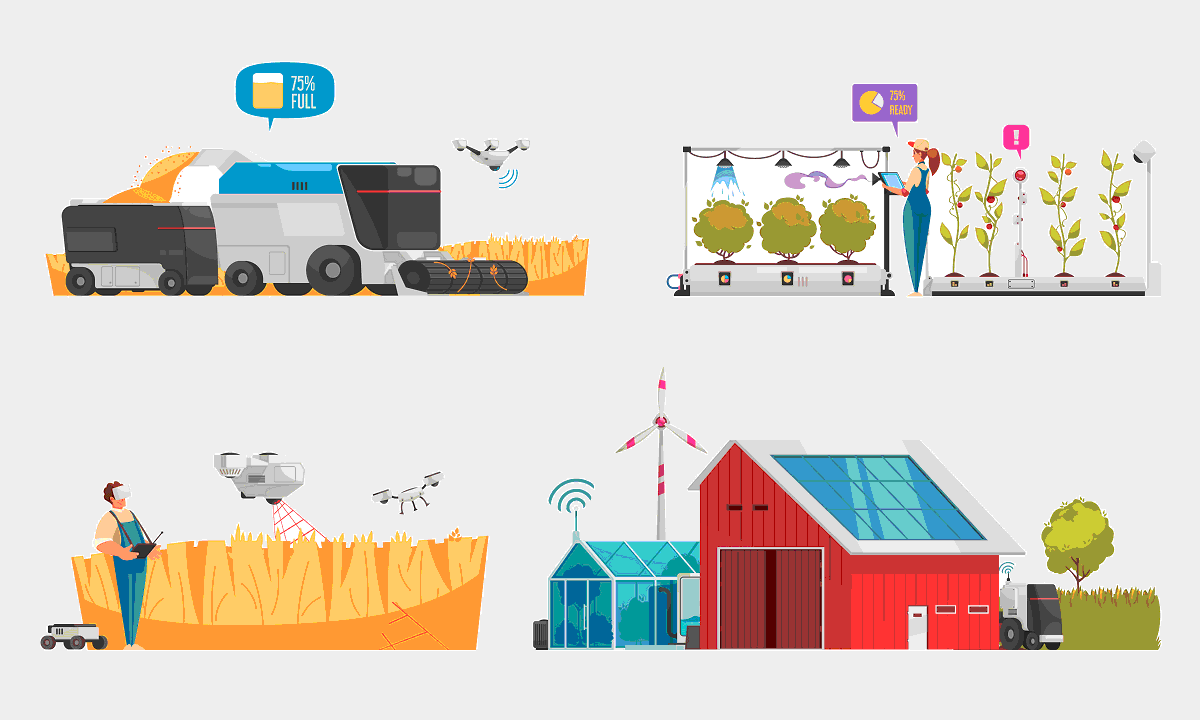
Introduction
Agriculture is a crucial aspect of human life, providing food and other essential products for the world's population. With the increasing demand for food, the need for sustainable and efficient agriculture practices has become more critical than ever. One of the tools that can help achieve this goal is the use of biosensors in agriculture.
What are Biosensors?
A biosensor is a device that uses biological components, such as enzymes, antibodies, and microorganisms, to detect specific chemicals or biological entities and produce a measurable signal. This signal can be used to determine the presence, concentration, or activity of the target substance in a sample. Biosensors have been developed for a wide range of applications, including environmental monitoring, medical diagnosis, and industrial process control.
Importance of Biosensors in Agriculture
Biosensors play a crucial role in the development of precision agriculture and sustainable agriculture practices. Precision agriculture is a farming management concept that uses technology to optimize crop production and minimize waste. It involves collecting data on soil and water quality, weather conditions, and plant growth to make informed decisions about fertilization, irrigation, and pest control.
Sustainable agriculture, on the other hand, aims to produce food while preserving the environment and preserving natural resources for future generations. Biosensors can help in this effort by reducing the use of chemicals and improving water and soil management.
Examples of Biosensors in Agriculture
Biosensors can be used for a variety of purposes in agriculture, including:
Soil and Water Quality Monitoring
Biosensors can be used to monitor soil and water quality to ensure that crops are grown in optimal conditions. For example, biosensors can be used to measure the pH and nitrogen levels in soil to optimize fertilization practices. In water, biosensors can be used to measure the presence of contaminants and monitor water quality to ensure that crops are not exposed to harmful substances.
Crop Management
Biosensors can also be used to monitor crop growth and development to ensure that crops are healthy and producing at their maximum potential. For example, biosensors can be used to measure the level of stress in plants and respond with appropriate interventions, such as adjusting water or fertilizer levels.
Other Agriculture Applications
Biosensors can also be used in other applications, such as monitoring crop storage conditions, detecting plant diseases, and monitoring animal health.
Advantages and Limitations of Biosensors in Agriculture
The use of biosensors in agriculture provides several benefits, including:
Increased Efficiency
Biosensors can provide real-time information about soil and water quality, crop growth, and other factors, allowing farmers to make informed decisions about their crops and make adjustments as needed.
Reduced Chemical Use
The use of biosensors in agriculture can lead to a decrease in the use of chemicals by up to 50% and an increase in crop yields by up to 20%, according to a study. This results in a reduction in environmental pollution and a more sustainable agriculture system.
Improved Crop Yields
Biosensors can help farmers to optimize their crop management practices, leading to improved crop yields and higher profits.
However, there are also some limitations to the use of biosensors in agriculture, including:
Cost
Biosensors can be expensive, making them difficult for small farmers to access.
Technical Expertise
Biosensors require a certain level of maintenance and calibration to ensure accurate readings, and this can be time-consuming and costly. In some cases, biosensors can also have limited life spans due to the biological components used in the device, which can degrade over time.
Despite these limitations, the use of biosensors in agriculture continues to grow and evolve. New technologies and advancements are being developed to address the challenges and limitations of biosensors, such as the development of more durable and long-lasting biosensors, and the integration of biosensors with other precision agriculture technologies.
Emerging Trends and Future Prospects of Biosensors in Agriculture
The future of biosensors in agriculture looks bright, with new and innovative uses being developed all the time. Some of the emerging trends in biosensors in agriculture include:
- Integration with precision agriculture technologies: The integration of biosensors with other precision agriculture technologies, such as drones, GPS, and sensors, is allowing farmers to collect even more data and information about their crops and soil.
- Increased use in livestock management: Biosensors are also being used in livestock management, to monitor the health and wellbeing of animals and to improve the management of livestock production.
- Development of multi-functional biosensors: There is a growing trend towards the development of multi-functional biosensors, which can measure multiple parameters such as pH, temperature, and nutrient levels, all in one device.
- Use in monitoring and managing food safety: Biosensors are also being used to monitor and manage food safety, to ensure that food products are free from contaminants and pathogens.
Conclusion
Biosensors are an important tool for agriculture, offering a range of benefits, including improved soil and water quality monitoring, better crop management, and more sustainable agriculture practices. The use of biosensors in agriculture is expected to continue to grow and evolve in the future, with new and innovative uses being developed all the time. Despite some limitations, the potential benefits of using biosensors in agriculture make them a valuable tool for farmers and agriculture professionals.
Agricultural Science

